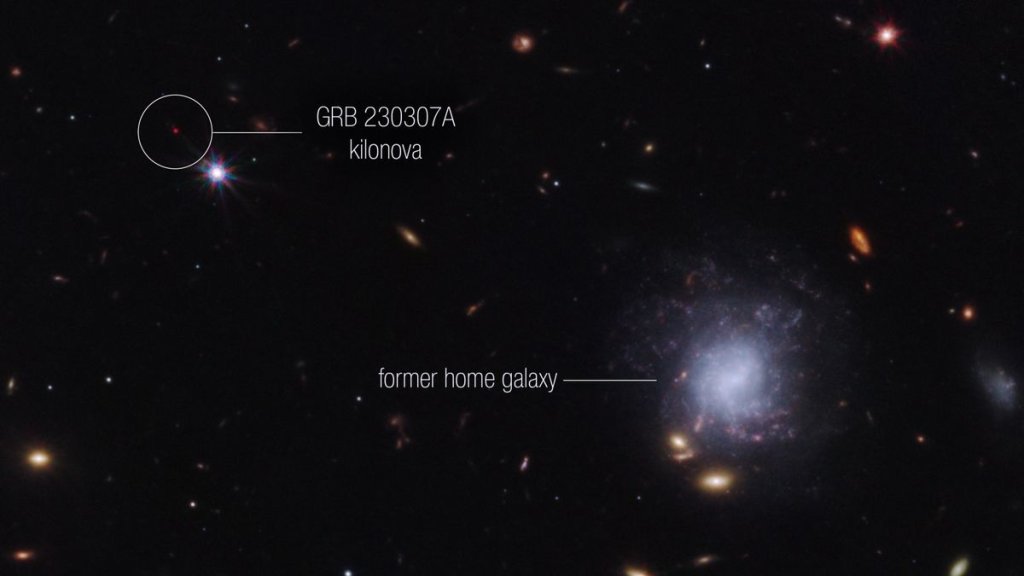
James Webb Space Telescope finds rare heavy chemical element from ‘kilonova’ explosion (Image Credit: Space.com)
Astronomers using NASA’s powerful James Webb Space Telescope (JWST) just spotted tellurium, an element rarer than platinum is on Earth, in the aftermath of two dense stellar corpses about 1 billion light-years away. The findings could help researchers better understand the conditions in which precious chemical elements are created in the universe.
“Just over 150 years since Dmitri Mendeleev wrote down the periodic table of elements, we are now finally in the position to start filling in those last blanks of understanding where everything was made, thanks to Webb,” study lead author Andrew Levan of Radboud University in the Netherlands and lead author of the study said in a statement.
Scientists suspect the now-merged neutron stars, spied on by the James Webb Space Telescope, were once garden-variety massive stars gravitationally locked in their home galaxy. When one among the pair reached the end of its life and exploded as a supernova, it appears the star blasted out of its galaxy and landed 120,000 light-years away. The second star followed suit.
Related: James Webb Space Telescope spots violent collision between neutron stars
Despite being kicked out of their galaxy in explosive ways, the neutron-star duo continued to be gravitationally bound, scientists say. They then merged into one body many hundred million years later — we saw that happen on March 7 of this year, to be exact.
“This type of explosion is very rapid, with the material in the explosion also expanding swiftly,” said study co-author Om Sharan Salafia of INAF-Brera Astronomical Observatory in Italy.
The violent cosmic merger, known to astronomers as a kilonova, sparked a gamma-ray burst (GRB) witnessed by scientists on March 7 — the second brightest GRB since the search for these phenomena began 50 years ago. The glare was first spotted by NASA’s Fermi space observatory, and lasted a record 200 seconds. Similar flashes from previous star mergers diffused within just two seconds.
Fermi, Webb and the Neil Gehrels Swift Observatory eyed the bright flash and worked toward pinpointing its source, according to the statement. Scientists say Webb’s observations of the aftermath helped identify tellurium in the cloud of material surrounding the merger, marking yet another milestone in its historic mission.
“Webb provides a phenomenal boost and may find even heavier elements,” said study co-author Ben Gompertz, a professor at the University of Birmingham in the U.K. The observatory “has certainly opened the door to do a lot more, and its abilities will be completely transformative for our understanding of the universe.”
This research is described in a paper published Wednesday (Oct. 25) in the journal Nature.





